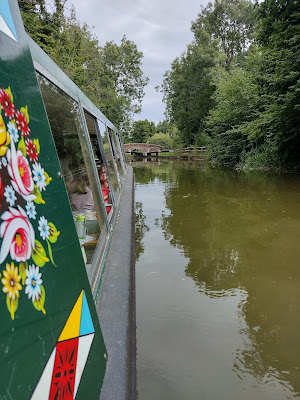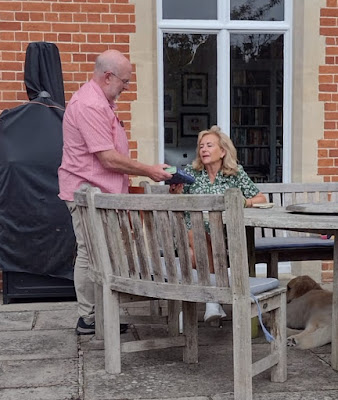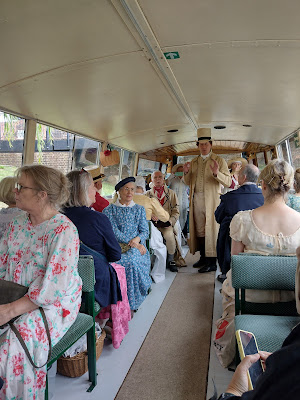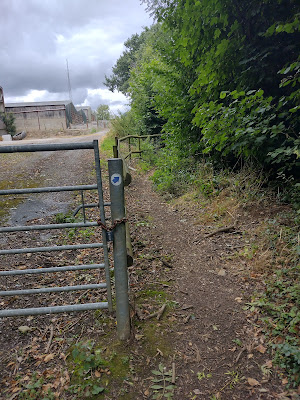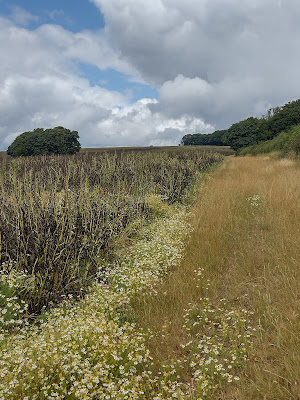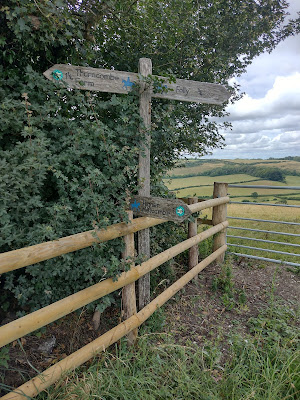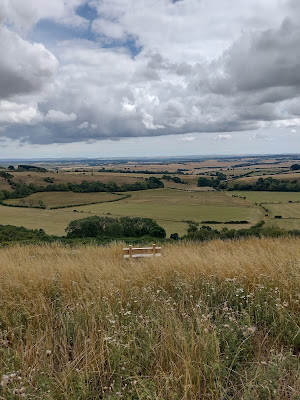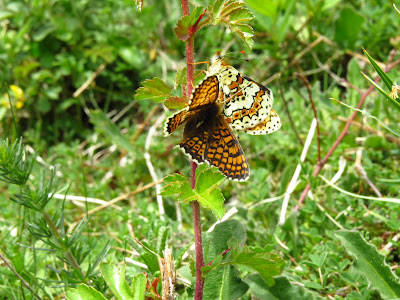In A Fistful of Dollars, the arrival of a stranger brings with it six-shooter law to the township of San Miguel. Ultimately the dire situation the town found itself in, sandwiched between a feud between two families, is resolved through a gun battle in the parched dusty windblown town square before the 'man with no name' (played by Clint Eastwood in his first role) rides out of town, never to return.
You can feel the heat in this classic and well loved Spaghetti Western. Sweat drips off the foreheads of the main players, the sunlight blindingly intense, the sky is the deepest of blue, dust billows everywhere, energy sapping heat devoid of all rain.
I was born in 1964. A Fistful of Dollars was released in 1964 and this week the Scottish Environment Protection Agency announced it had had its driest year since 1964. Even in a normally wet Scotland farmers are having to provide water to stock. I don't think there is any connection between these three, or is there?
In this part of Somerset, and across the whole of southern England, this year has been dry, exceptionally dry and warm. I've known dry summers, I've known hot periods. I well remember holidaying in Bournemouth in 1976 characterised by heat and the scent of heathland fire smoke everywhere. But these were relatively short lived, a number of weeks. With just a few days to go before the end of the metrological summer, the breaking news is that 2025 will undoubtedly be the warmest summer on record due to daily temperatures above the seasonal norm for months. Part of what seems a rising trend, 1976 no longer features in the top 5 list of hot summers. The record-breaking dry year of 1964 with its 79% rainfall now an interesting footnote.
Despite the wet winter of 2024-2025, Spring arrived abruptly bringing with it drying winds and sunshine. I've been looking at my diary. On the 15th of February we were in Thenford Arboretum in Northamptonshire and 'today's weather was more like mid December - horrible grey, foggy, wet weather'. There seemed to be a lot of cloudy dark days before I then wrote in my diary on February 28th 'Weather has settled in to a dry sunny spell at last'. The following day I wrote 'what a fabulous and beautiful day - not a breath of wind, the sun had heat to it'. I remember the last few weeks at work before I retired on the 19th of March were wonderfully sunny, even warm. Quickly however by mid April I recall being worried about the dry conditions while walking on the Quantock Hills. Again in my diary I wrote on the 11th of April, 'everything is tinder dry on the Quantocks - the soil is either baked solid or blowing away in the quite gentle breeze - I notice farms are supplying water to sheep up here'. But we assumed the rain would come.
Yet four months later we've had hardly any rain. In Somerset just 1% of the average monthly rainfall for July. Over the summer around a third of the average expected rainfall has fallen. What has fallen, sporadically in hefty showers, evaporated quickly in the warm sunshine. As I write this on the 28th of August many trees and shrubs are showing serious signs of stress, branches being shed, leaves dropping quickly with the landscape looking more October golden than late summer. It won't be until next summer that we'll see the full effect of this dry season on tree health but looking now it's not good to witness and I sadly predict many trees will not survive.
A walk we did over the recent August Bank Holiday weekend has highlighted, and provided the impetus to write a few words, how significant this dry spell has become. If you will an aide-mémoire to this remarkable year before all too soon the autumnal rains will return, or at least we sincerely hope so.
This walk began in the nearby Somerset village of Winscombe, with a plan to walk to the hamlet of Winterhead and return. All too soon as we left Winscombe the first field was the colour of bleached champagne. Underfoot the soil unyielding, it felt like walking on concrete.
After a few fields the walk follows a myriad of lanes up towards Sidcot Hill. What struck me was the number of fallen leaves and how, as in this image below, the beech tree leaves are turning orange. I had to remind myself this was August 23rd, not October 23rd.
Worse was to come. We left the lanes and entered the countryside proper, firstly horse paddocks, which seemed to have virtually no grass left in them. Usually in dry periods the grass yellows but the root systems lie dormant waiting for the the next wet spell. These fields though were showing extensive areas of dusty dirt. What has happened to the grass, have the roots died too? I looked across the fields. Yes trees and hedges were retaining colour but the landscape looks tired, a beige hue of exhaustion, it has looked like this for a long time.


Beyond the paddocks we headed up onto Sidcot Hill on the way to joining the West Mendip Way. In this heat, which has defined the summer of 2025, it was a long slog up onto the hill. The views up here are astonishing, across to Wales, but it was how dry the fields looked that caught my attention. These fields still contained sheep, sheltering in the shadow of a hedge, but fields with little grass growing, though plenty of dock plants or thistles surviving due to their long tap roots.


We eventually joined the West Mendip Way where by chance we had a long chat to the farmer here, Mark Heal. The track this medium-long distance path follows is usually muddy even in summer. As we chatted by the gate Mark confirmed many of the issues I'd already heard about affecting farming elsewhere. He told us that he has now used up the last of his winter feed as he has been supplementary feeding his organic beef and sheep all summer long. Lambing during the warm weather in April, he added, was something of a treat, but with no rain of note since then all his stock has needed to be fed, when they should of course be feeding naturally on the summer grazing. Economically this is disastrous. Worse still, he continued, every farmer he knows is in the same position and if replacement winter feed can be found it is both scarce and very expensive, a situation which can only be made worse by the poor harvest this year, yields are significantly down with hay and silage crops almost non existent. There will be a fodder shortage this coming winter. For someone who is struggling to keep his animals alive and healthy Mark seemed quite optimistic about the future, as long as it rains that is.

I watched Mark drive off up the dusty track, on his way to check his South Devon Black cattle we'd seen earlier. I was touched by his optimism as we headed off in the opposite direction across what should have been a muddy ford, which today simply featured the well preserved baked hard mountain bike tyre tracks from a previous season.
He's right, we need to be optimistic to the changes in Britain's weather. My own take is that with Climate Change Britain is becoming much more continental in its weather patterns, meaning prolonged spells of the same conditions rather than the hotchpotch of weather changing daily we've all considered the norm for a century or more. Personally I have enjoyed weeks of predictable dry days this summer but I know many, my wife included, have struggled with the prolonged heat day in, day out, dominated by four heatwaves of exceptional temperatures.
Wildlife has had mixed fortunes too. Dry soils mean earthworms and soil invertebrates have buried down deep, out of the reach of birds, hedgehogs and other animals who rely on these for survival. Slugs and snails have found hidden corners and gone into what is called Aestivation, a form or dormancy that allows them to tick over their metabolism before the rain returns. Our swifts departed about two weeks early, partly a sign of a successful and early season, they arrived a week early. Bats around the house have been very active however due to the abundant insect life which has bucked some of the negative trend with second broods of butterflies doing well in some species for example. Earlier in the summer there was a ladybird population explosion, short lived as the aphid population was supressed. I've seen more harvestmen in the garden than for years.
Now though it has gone on long enough. As I write this unsettled weather brought to us by ex-hurricane Erin is trying to make inroads but it is not really producing what we need. Yes it is a little cooler, a little more cloud in the sky but the rain of yesterday was in the form of short lived showers and as has been the case all year, rain evaporated in an hour or so leaving the landscape dry once more. What we need is a few weeks of steady medium intensity rain, not heavy downpours, to begin the water cycle again.
We eventually finished our walk last weekend taking in the views and the scenery and finishing at Winscombe Cricket Club where for about an hour we watched Wedmore 2nds playing Winscombe 2nds on a very dry pitch - perfect weather for cricket while watching the wind ruffle the piles of fallen leaves beside us.
I don't think I'll forget this year for a long while. The rain will of course return one day, and, if my predictions are accurate for a continental climate, it will probably rain every day for weeks non stop, if not for months. Then, possibly following the arrival of a stranger riding ahead of a weather front, I'll look back and say, was the hot dry summer of 2025 actually real?

















